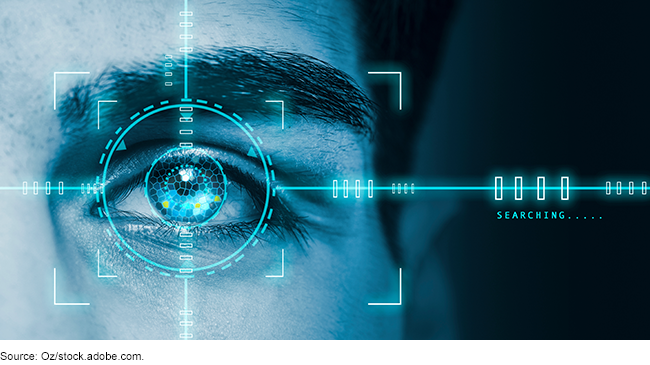Biometric Identification Technologies: Considerations to Address Information Gaps and Other Stakeholder Concerns
Fast Facts
Biometric identification technologies—such as facial recognition and fingerprinting—can affect underserved communities, including low-income and minority communities. We interviewed academics, advocacy groups, and technology experts to find out how.
They gave us examples of positive effects, e.g., improving communities' access to public services, and negative effects, e.g., subjecting communities to unnecessary surveillance.
There's still a lot to learn about how these technologies perform in the real world and how they affect specific communities. Evaluating their performance, promoting transparency, and more could help address concerns.

Highlights
What GAO Found
The accuracy of biometric identification technologies has improved according to the body of research conducted in a laboratory setting, particularly for facial recognition, but gaps remain in understanding real-world performance. Various factors, such as a lack of demographic diversity in the datasets on which biometric algorithms are trained, can lead to differences in accuracy across demographic groups according to literature GAO reviewed and researchers GAO interviewed. While differences in technologies' performance have been studied in laboratory testing, performance in real-world settings has been much less extensively studied because, for example, of challenges acquiring meaningful samples across demographic groups.
Selected stakeholders provided examples of positive and negative effects associated with the use of biometric identification in communities facing historical patterns of disadvantage. Positive examples included convenience and increased access to public benefits and services, while negative examples included false arrests and subjecting communities to surveillance. The selected stakeholders identified concerns about the use of biometric identification technologies, which GAO grouped into six areas: biased outcomes, limitations understanding technology performance and effects, data and privacy, systemic inequity, lack of transparency, and technical expertise of users.
GAO identified five key considerations that could help policymakers address one or more areas of stakeholder concern through a review of relevant literature and stakeholder interviews. These key considerations include: (1) conducting comprehensive evaluations to provide a fuller picture of the effects of biometric identification technologies, (2) encouraging more widespread sharing of information about the use of the technologies, (3) applying a risk-based approach in developing regulation and guidance, (4) enacting comprehensive privacy laws or guidance, and (5) providing technology users with additional training and guidance on how to select and use relevant technologies appropriately.
Six Stakeholder Concerns About the Use of Biometric Identification Technologies and Five Considerations for Addressing Concerns

Why GAO Did This Study
Biometric identification is the recognition of individuals based on their biological characteristics. These technologies include facial recognition, iris scanning, and fingerprinting, among others. Advocates for the use of biometric identification point to potential for the technologies to increase convenience, security, and efficiency. At the same time, several organizations have raised concerns about the accuracy of the technologies and their effect on privacy and civil liberties.
The Research and Development, Competition, and Innovation Act includes a provision for GAO to examine “the impact of biometric identification technologies on historically marginalized communities, including low-income communities and minority religious, racial, and ethnic groups.”
This report (1) describes literature and researcher views on the accuracy of biometric identification technologies across populations; (2) describes selected stakeholders' perspectives on how, if at all, use of biometric identification technologies affects access to resources or levels of inequality for communities that have faced historical patterns of disadvantage; and (3) identifies key considerations that could help address stakeholder concerns about the use of biometric identification technologies.
GAO reviewed academic literature, government reports, and industry documents. GAO also interviewed researchers and a range of stakeholders, including community advocates; technology vendors; and local, state, and federal governments.
For more information, contact Candice N. Wright at (202) 512-6888 or WrightC@gao.gov.
